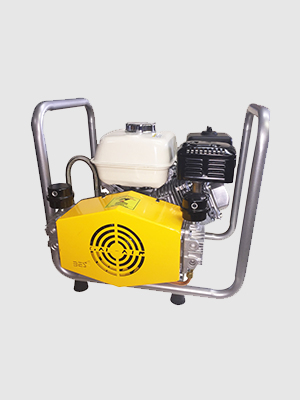Air compressors are powerful tools used in industrial, commercial, and residential settings. They are used to power tools and machines, and to inflate tires, among other things. Traditional air compressors have tanks to store compressed air, but a new type of air compressor, known as a tankless air compressor, eliminates the need for a tank.
Tankless air compressors, also known as “on-demand” air compressors, are becoming increasingly popular due to their convenience and cost-effectiveness. They are often used in applications where a traditional tank-style compressor is not suitable, such as when space is limited or when a continuous supply of air is needed. In this article, we will discuss the advantages and disadvantages of tankless air compressors, as well as the different types available on the market today.
1. Advantages of Tankless Air Compressors
Contents
Tankless air compressors offer several advantages over traditional tank-style models.
A. Compact Size and Mobility
One of the most significant advantages of tankless air compressors is their compact size and mobility. Tankless air compressors are significantly smaller than traditional tank-style compressors, making them ideal for applications where space is limited. They are also much lighter, making them easy to transport from one job site to another.
B. Continuous Air Supply
Another advantage of tankless air compressors is that they provide a continuous supply of air. This is because they do not require a tank to store air, meaning that they can run continuously without having to wait for the tank to refill. This makes them ideal for applications where a continuous supply of air is needed, such as powering pneumatic tools.
C. Cost-Effective
Tankless air compressors are also cost-effective. They are often cheaper than traditional tank-style compressors and require less maintenance, as they do not have a tank that needs to be replaced or serviced. This makes them ideal for applications where cost is a factor.
2. Disadvantages of Tankless Air Compressors
Despite the advantages of tankless air compressors, there are some disadvantages that should be considered.
A. Limited Flow Rate
One of the main disadvantages of tankless air compressors is that they typically have a limited flow rate. This means that they cannot produce the same amount of air as a traditional tank-style compressor. This can be an issue in applications where a large amount of air is needed, such as inflating tires.
B. Noise
Another disadvantage of tankless air compressors is that they can be noisy. This is due to the fact that they do not have a tank to absorb sound, meaning that they can be quite loud when in operation. This can be an issue in applications where noise is a factor, such as in residential settings.
C. Vibration
Finally, tankless air compressors can be prone to vibration. This is due to the fact that they do not have a tank to absorb the vibration of the motor. This can be an issue in applications where vibration is a factor, such as in sensitive equipment.
3. Types of Tankless Air Compressors
There are several different types of tankless air compressors available on the market today.
A. Single-Stage
Single-stage tankless air compressors are the most common type of tankless air compressor. These compressors use a single piston to compress air. They are typically used in applications where a continuous supply of air is needed, such as powering pneumatic tools.
B. Two-Stage
Two-stage tankless air compressors are slightly more powerful than single-stage models. They use two pistons to compress air, which allows them to produce higher pressures. They are typically used in applications where a large amount of air is needed, such as inflating tires.
C. Rotary-Screw
Rotary-screw tankless air compressors are the most powerful type of tankless air compressor. These compressors use two intermeshing screws to compress air. They are typically used in industrial applications where a continuous supply of high-pressure air is needed.
Conclusion
Tankless air compressors offer several advantages over traditional tank-style models, such as their compact size, continuous air supply, and cost-effectiveness. However, they also have some disadvantages, such as their limited flow rate, noise, and vibration. There are several different types of tankless air compressors available on the market today, including single-stage, two-stage, and rotary-screw models.
Tankless air compressors are becoming increasingly popular due to their convenience and cost-effectiveness. They are often used in applications where a traditional tank-style compressor is not suitable, such as when space is limited or when a continuous supply of air is needed. For those looking for a cost-effective and reliable air compressor, a tankless model may be the perfect solution.

